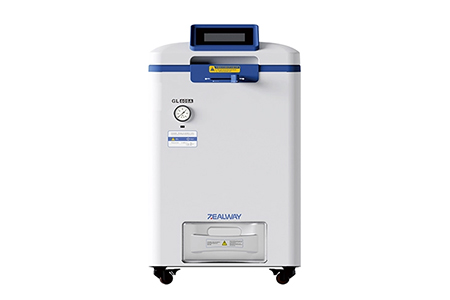Autoclaves are rapid and reliable sterilization devices that use saturated pressure steam to sterilize items. They are applicable in medical and healthcare settings, scientific research, agriculture, and other fields. Autoclaves are classified by style and size into portable autoclaves, vertical pressure steam sterilizers, horizontal autoclaves, and more. They are used for sterilizing medical equipment, dressings, glassware, solution media, and can also be used in high-altitude areas for steaming equipment and producing high-quality drinking water. Additionally, they can serve as sources of high-temperature steam.

Autoclaves are high-pressure containers that sterilize liquids or instruments by using pressure higher than atmospheric pressure to raise the boiling point of water above 100℃. The autoclave sterilizer series is a rapid and reliable disinfection and sterilization equipment using pressure-saturated steam, suitable for medical and healthcare, scientific research, agriculture, and other fields.
Main Structure:
Functional Extension Options: Includes flexible sensors, digital printers, automatic water supply, and cooling functions.
Flip Lid Design: The chamber lid can be easily and safely opened with one hand.
Dual Electronic and Mechanical Interlocking Device: Locks the chamber lid by detecting the internal pressure and temperature, ensuring greater safety during use.
Intelligent System for Real-Time Air Exclusion Monitoring: To avoid residual air affecting the sterilization results, this instrument uses an intelligent system to detect residual air in the sterilizer in real-time.
Automatic Exhaust Device: A new automatic steam removal device is used to sterilize liquid substrates without boiling. After sterilization, steam can be gradually released at a pre-set rate.
Agar Handling Method: Allows users to speed up the melting of agar or preheat the chamber more effectively.
Automatic Start-Up Program: A built-in timer can be programmed to allow the autoclave to automatically start a sterilization cycle (up to two weeks).
Memory (Storage) Support System: Various parameters (such as sterilization, exhaust, heating, etc.) can be changed, and once changed (even in the event of a power failure), these parameters can still be retained.
High-pressure steam sterilization involves placing items to be sterilized in a closed pressurized sterilizer. By heating, the water in the sterilizer boils and produces steam. The exhaust valve is then closed, and heating continues. Since the steam cannot escape, the pressure in the sterilizer increases, raising the boiling point and achieving temperatures above 100℃. This causes bacterial proteins to coagulate and denature, achieving sterilization.
When using a high-pressure steam sterilizer, it is crucial to completely exclude cold air from the sterilizer. The expansion pressure of air is greater than that of water vapor, so when air is present in the steam, the temperature of the air-steam mixture is lower than that of saturated steam at the same pressure. Therefore, only by exhausting the cold air from the chamber can the temperature be uniform throughout, ensuring effective sterilization.
The application scope of autoclaves includes rapid and reliable disinfection and sterilization using pressure-saturated steam. They are ideal for medical and healthcare, scientific research, agriculture, and other fields, and are used for sterilizing medical equipment, dressings, glassware, solution culture media, and more.